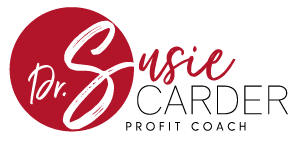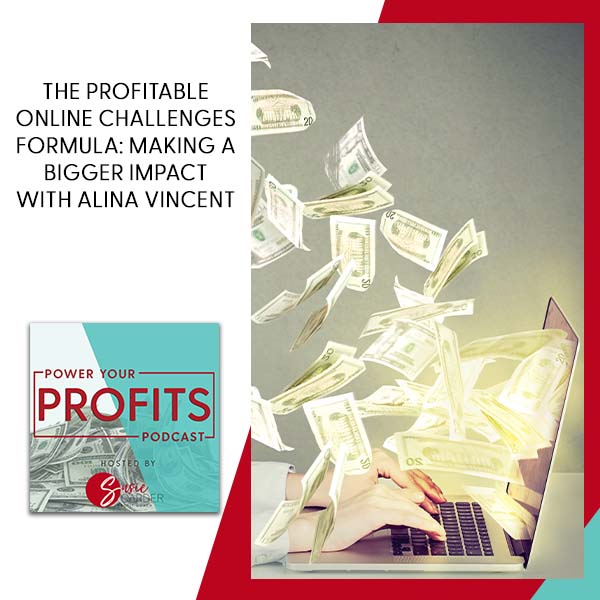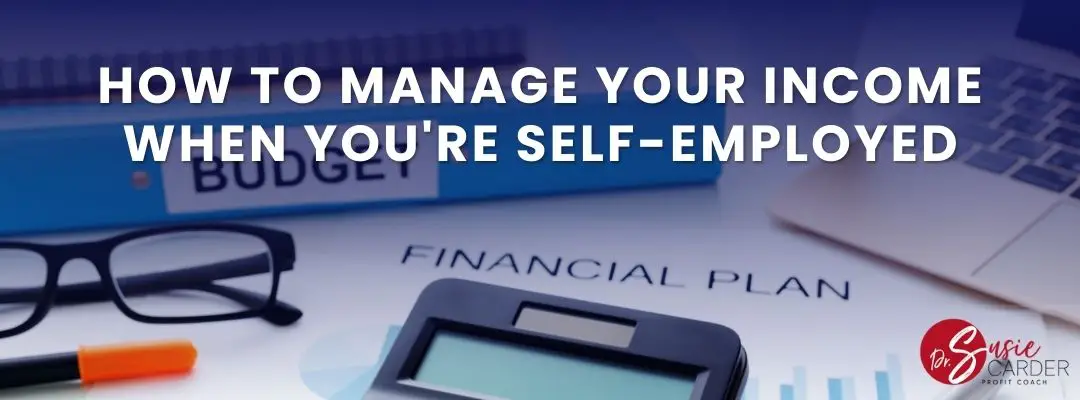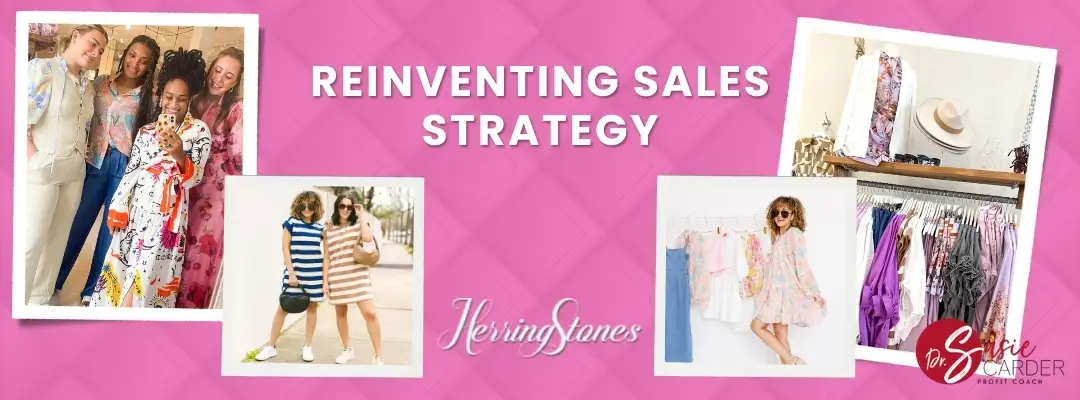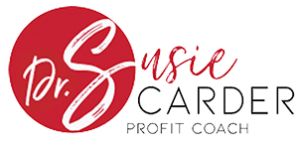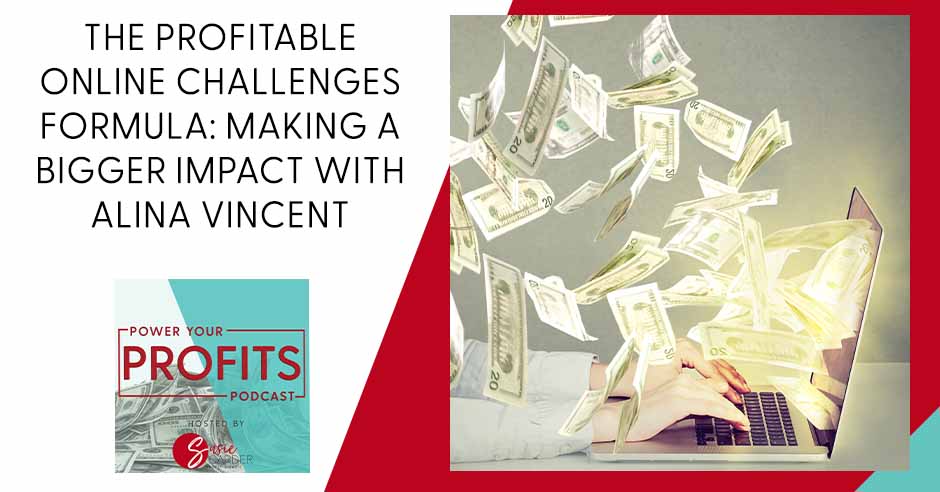
Are you sure you know everything you need to learn about your business? Are you executing the right strategies for growth and success? If you’re struggling to have paying clients and don’t know what you need to do to attract them, you have to stay tuned in this episode. Susie Carder talks with Alina Vincent about the profitable online challenges formula. Alina Vincent is a business strategist, speaker, and bestselling author of Teach Your Expertise. She’s known globally as the Profitable Online Challenges Formula creator, which helped her grow her business from zero to over a million dollars in just four years. This is the time to discover the right strategies and reach your goals!
—
Watch the episode here
Listen to the podcast here
The Profitable Online Challenges Formula: Making A Bigger Impact With Alina Vincent
My guest is Alina Vincent. She’s a business strategist speaker and the bestselling author of Teach Your Expertise. She’s known globally as the creator of the Profitable Online Challenges formula, which helped her grow her business from $0 to over $1 million in four years. Please welcome my guest, Alina.
—
Alina, I am so excited to share you with our audience because you are a secret weapon. I only bring secret weapons on the show because we all need secret weapons. A ton of people out there say they can do it, but I know you can do it because I have the insiders group with the group that we met through. Share with everybody what is your badass list. Why should we pay attention and listen to you? Why are you the jam for this thing called creating Profitable Challenges?
The interesting thing about my journey is that I never set up to be an entrepreneur. Growing up, I had my career in the academic world laid out in front of me because I’m a third-generation teacher. I never thought I would want to have a business or will have a seven-figure business. As I was working, teaching and getting degrees at the university, eventually, I decided I didn’t like having a boss and somebody to tell me how much I get to make. I decided to quit my job and start a business. My very first business was a photography business. I stayed in that business for about 2 to 3 years.
I got into six figures pretty fast. It was a big culture shock going from a world where you didn’t have to talk about yourself and promote yourself into like, “It’s not enough to be good at something,” to, “I have to talk about myself and tell people why they should be working with me.” I had to learn a lot about marketing. In that process, as I had my photography studio and started to get some traction, I realized I walked myself into a corner where I had a super successful and unscalable one-on-one business. Everything I was doing was completely one-on-one and all of my time went on working with people. I simply couldn’t grow it anymore because there were no more hours in a week and the day.
Right at the time, that was the next big switch in my career and my life. I decided I wanted to have a scalable, leveraged, global business and didn’t get stuck in one specific location. I did not want to have any limits on how far I could grow. That is the business that I have now. Within the first four years, we got to $1 million. A lot of people come to me and say, “How did you manage to get to $1 million in four years starting from scratch and not ever having a single coaching client?” One of the big reasons is I can tell you more about the struggles that we have had and how I run and beg people to work with me. Eventually, what put me on the map is after about four months of trying to get even a single client, I decided to create an online challenge.
I ran the challenge and immediately started getting clients and people who wanted to talk to me, put me on stages and promote me. I said, “This is working. I’m going to do more of it.” I owe everything that I have in my business to this formula that I have created and perfected over the years and that I have been using for years. Challenges are the bread and butter of my business. We have had thousands of people who have helped with their challenge ideas. We have had lots of people going through a program and this is what I’m known for how to create super amazing, profitable and free five-day challenges.
That’s your badass list. I love it because a lot of people do challenges. We do challenges and there is a secret sauce. What would you attribute your success to the five-day challenge that you do? Can you tell me what’s working in this environment? I know a lot of people are Zoom-fatigued and they’re checking out. We get people showing up and then we get about 50% of the people to show up. If you get 1,000 people to sign up, we only get 50% of the people that show up and I’m like, “There’s a formula I don’t know.” I’m going to be a student and the interviewer simultaneously.
Challenges are, in general, not new. They have been around for hundreds of years. The whole idea of the challenge is somebody comes to you and says, “I challenge you to do something.” We, as human beings, love being challenged. It’s our way of getting ourselves out of the box and out of our comfort zone, learning something new, achieving or resolving that we would not push ourselves that much. We have this inherent and wired desire to be challenged because that’s how we rise, grow and learn. The whole premise of the challenge is we like being challenged because it helps us grow. That’s the first thing.
When I started doing challenges, it was funny because coming from the photography world, I was participating in a lot of challenges in the informal photography groups. We would challenge ourselves like, “This month, we’re going to shoot and perfect underwater photography. Next month, we’re going to shoot in a film noir style.” It has always been like, “I don’t know. I have never done this before. Let me try it.” I fell in love with challenges as being part of this supportive and loving community that challenges you, keeps you accountable, and also inspires you to be better than you are.
When I started the coaching business that I have, this is what I put together. That was my brilliant a-ha moment like, “Let me put together this idea of challenges but create them in a way that I can monetize it, create immediate training around it and put a little bit more of a formal structure around that.” That is what I have been working on for years. My very first challenge was a 21-day challenge. I have also done 10-day, 30-day, 5-day, and 7-day challenges. To me, when we got to this five-day challenge format, that’s the golden number if you want to do free challenges. There’s a big difference between free challenges and paid challenges. Do you want me to talk about that?
Yes, please.
We like being challenged because it helps us grow.
Here’s the difference between free challenges and paid challenges. At the very beginning, when I was saying, “I’m doing a challenge,” I would be speaking in front of an audience of 100 people and say, “Raise your hand if you have ever done a challenge for your business or participated in a challenge.” Three hands would go up. I open my email inbox and there are five invitations or challenges every single day. They have taken the internet by storm and everybody is doing challenges. I’m sure you have seen free challenges versus paid challenges. Depending on where you are in business, you need to decide which one is the right for you.
If you are first starting a business, you might not even have a list, a Facebook following or that much exposure on social media. You’re like, “I don’t have money for Facebook ads and I want to do a paid challenge.” It’s a bad decision because it serves several different purposes if you’re doing a challenge for free. It grows your list, your online following and gets your clients fast in a matter of days. It’s a very low-cost and low-tech way to put together a training that you can sell and monetize. If you’re first starting and making a paid challenge, you’re asking people to trust you right away and sign up for something.
Most people struggle in getting their first clients. If you already have a list of 10,000 people, 50,000 people, or 100,000 people, it’s easy to do paid challenges because you can snap your fingers and say, “I’m doing this training and it’s going to be $5, $55, $95 or something super reasonable.” You can easily have hundreds of people joining because you have already spent those years building up trust and credibility, so your people know they want it. If you’re first starting, do free challenges because you’re growing your visibility, list, following and you’re getting clients. Depending on where you are in business, you want to choose what type of challenge you want around.
When you look at a five-day challenge, what’s the formula? I have a certain formula that I do. What’s your formula for the five days? That would be juicy.
I have tested everything that I’m telling you and every single element of it over the years of multiple challenges. I have had hundreds if not thousands of people using that formula. We have looked at, “What if you do this? That wouldn’t work. What if you do that?” Everything I’m telling you is not just something that came out of the air. It came from years of research and testing other possibilities in other things. My formula is five days. We start on Monday and end on Friday and every day, people get a short pre-recorded video. They’re getting a link to a pre-recorded video and the video is about 5 to 10 minutes long. I know it’s very different from some of the challenges you might have seen where you will go live for two hours every day.
I want to cry at this one little piece like, “That would be great.”
We could talk about the differences. I would be happy to dive in. To finish my formula, it’s five days. You have five pre-recorded videos. Every single day, people get a short assignment or something that they can complete that day within minutes. Every day, there’s a prompt or something they need to post in our Facebook group because we always run our challenges in the same Facebook group. They have to post it by whatever the cutoff you decide. I usually do 10:00 PM, Pacific. We pick a daily prizewinner from anybody who participated that day and submitted their answers.
Another part of my formula is on Thursdays, we do a live Q&A and that live Q&A is happening on Zoom, and it has to be on Thursdays for many reasons. You can see people and they can see you. They can get them the mic and they can be on the video, so you have real-time interaction. That’s about it as far as the formula. In addition to that, I do pop-up Facebook Lives throughout the week.
If I see that I need to do some course correction, I want to spotlight good answers or I want to answer some questions, I will pop in and I don’t announce when it is in advance, which is saying, “Here’s what I’m noticing. Let me give you some feedback. Here are some of the things that I see going wrong and here’s how you can improve it. Let me give you some coaching or answer some questions.”
After the five days are over, we give people two more days to complete and catch up. On the seventh day, we remove all the videos and also do a grand prize drawing. This is for everybody who completed all five days of assignments. We do a big grand prize. It’s something that people want. We will do a big hoopla around doing a live drawing and choosing the winner.
What’s normally the grand price? Is it education?

It depends. We usually have a package deal. It’s going to be like a $100 Amazon gift certificate or $100 cash. Sometimes it’s time with my coaches or with me. It could be access to a training or a ticket to an event. It’s usually a bundle of several things.
From the challenge, are we upselling them to something else?
The challenge is always part of a bigger launch. The way I look at challenges in my business is I don’t do any promotions in my business unless I put a challenge in front of it first. You can use challenges to enhance any results you’re getting. If I wanted to fill my event, instead of selling tickets to my event or doing webinars, I would do a challenge, do my regular webinars, and sell tickets to the events.
If I want to launch a book, I will do a challenge and we will get it into the launch of the book and if I wanted to get one-on-one clients or fill a program. Anything that comes along, you’re thinking, “This is what I would normally be doing. I will put a challenge in front of it to amplify the results, bring more eyeballs on whatever I’m offering and get them engaged.” If people are engaged with you, they’re paying attention to what’s coming up next.
The whole point of doing a challenge is twofold. One is to build trust with new people who never even heard from you before or engage with the existing audience. The second thing is to build the desire for whatever is coming next. If you run your challenge properly, by day five, your people should be asking you, “Do you also help us with whatever your next thing is coming?” By day 4 or 5, if people are begging you for what’s coming next, you know you have done a good challenge.
What’s the sweet spot in the upsell? Is there a price point that you have the sweet spot is this?
There’s no sweet spot. The beauty of the five-day challenge, at least in the way we run them, is we have people who sell $7 or $20 things. It’s super easy to sell for $199 or $97. A lot of my clients who are starting and are brand-new will package something or do training or program at $97 to $197. It’s easy to get clients from that. I also have clients who come and say, “I want to sell my high-end mastermind, a $10,000 package or a $20,000 package.” They can easily sell that. You probably know Jeanna Gabellini. She came to me and her biggest concern was, “I want to do a free five-day challenge, but I’m afraid that I’m only going to attract freebie seekers. I want to sell a $10,000 mastermind, so I don’t think it’s going to work.”
I’m like, “Jeanna, are you trusting me?” She says, “I’ll trust you.” I have a program on how to do challenges. She took my program and made $250,000 from a five-day challenge selling her $10,000 mastermind. I’m all into the science and psychology of why things work the way they are. The cool thing was the challenges. It doesn’t ever attract freebie seekers. It attracts action takers. The big difference between challenges and all of the other free lead magnets you know of is when people download the free report. Whether we download it and say, “It made me feel good. It’s on my hard drive,” and you haven’t looked at it.
A challenge is not that way. A challenge is experiential. It’s not about information. That’s why my videos are 5 to 10 minutes long. I’m not going to overwhelm you with what I know and dazzle you with everything I know. I’m going to give you the gem or one specific thing that’s going to change your paradigm and something actionable to do and put you into action. It’s all about being in action, listening to directions, implementing and seeing results right away. The reason that challenges are so popular, people participate in them and good challenges lead to great results is that you are taking people through that filter of who my ideal clients are.
If people can follow you for five days, follow your direction, watch your videos, like the way you teach, start getting results, in the end, you’re being handed your ideal clients on a platter. They’re the ones who completed everything, finished everything, and took action. In my book, those are the people I want to work with. People sometimes go like, “What if I have 100 people sign up and only 30 or 50 people finish?” Those are your ideal clients. You put them through a filter and now you know those are the people who will follow your directions, like the way you teach, can implement it and love getting results from you.
There are a couple of caveats that you did, which most of my clients do. I’m guilty of it too. We want to give so much but, “Alina, I have more.” We don’t need to give more. I love the nugget of the 5 to 7 minutes only.
Depending on where you are in business, you want to choose what type of challenge you want around.
That’s another thing. If you’re doing paid challenges because there’s more of a commitment. Even if it’s $20, I have made a commitment, so I’m going to stick to it. You have to give people enough incentives to complete the whole thing in the free challenges. When I see those challenges where people go like, “I’m going to do a Facebook Live for 1 hour or 2 hours every day.” Nobody has that much time on their calendar.
What I tell them is, “Join. It’s free training. I’m going to help you get the specific results that you want. It’s a micro-commitment. It’s only five days. It’s only minutes a day and you will start seeing the results.” We have so many people saying, “Yours is the only challenge I have ever finished. I have completed every single daily assignment. It was precise and laser-focused action. I could do it and see results right away instead of wading through hours of information and still not knowing what I need to do.”
Give me an example of what the homework would be. What’s the simple and doable thing?
Give me an idea of a challenge and I will tell you.
It could be a money challenge.
It could be anything. Let’s say your first day is some money challenge. On day one, you’re talking about your money mindset, what is holding you back, and some of your money blocks. For example, you can give people 3 or 4 questions to answer and go through some self-exploration. That would be a nice, easy and precise ten-minute video. Their assignment could be to answer those five questions, “What is your biggest money block? What’s your relationship with money? How was money treated in your family when you were growing up?”
It’s whatever that helps them discover what could be holding them back or like, “Do you think money is evil or good?” It’s anything. It could be ten questions. That’s going to be their assignment. Their assignment is what they do on their own and the prompt would be what they post to the public in Facebook group. Sometimes I could say, “Post a screenshot of your work,” if it’s something that people wouldn’t mind sharing.
If we’re talking about money, some people are a little bit more like, “I don’t know if I want the public to know.” The prompt could be, “After doing this assignment, what is your biggest takeaway? What are the three blocks you have identified? What is the first action step you’re going to take?” It’s very simple to go do it. Even in my videos, I sometimes say, “Pause this video, grab a piece of paper, answer these questions and restart the video.” We’re going and working. I’m immediately putting them into action and implementation.
That is so simple, it confused me.
People work with me and hire me for VIP days to help them design their challenges or debrief the challenges they have done. For most people, especially of the multi-6-figure or 7-figure-level where you’re established, the hardest part is, “How do I say less?” We can talk for hours and in most of the stuff. I’m like, “What you’ve created is not a five-day challenge. This is a five-week course. How do we cut it in half?”
I’m so guilty of this one.

That’s the hardest part.
I was going to ask you what are the biggest mistakes, but you just shared them.
One of the biggest mistakes would be putting in way too much because you don’t want to overwhelm people. There are so many different mistakes. As far as overwhelming people, when it comes to challenges, less is more because people crave simplicity and simple step-by-step action. It’s almost like, “Tell me what I need to do and I’ll do it.” When we’re creating our challenges, we recommend that you explain what they need to do, why they need to do it, give them examples, and send them off doing it. You don’t need to dazzle them with your 30 years of experience because simplicity and step-by-step instructions are what people want. If you can do that, you’re going to be on a level of your own.
The biggest mistake people make is with choosing the topic of their challenge. It’s very interesting because it’s true across the board. I see it with people who are getting started, don’t have much experience and don’t know much about creating products. I also see it with multimillion-dollar businesses that have been in business for 20 to 30 years. The hardest thing with choosing the topic is we have been used to creating free lead magnets like checklists, templates, eBooks and reports that are very similar to what we’re trying to sell.
If you look at the more traditional launch models, I teach a challenge launch model, but it’s more traditional with PLF, Jeff Walker’s launch model. You have your launch and your pre-launch content or PLCs. That’s very similar and tied to what you’re promising. You cannot do it with challenges because the difference between free lead magnets and challenges is in free lead magnets. You want people to get interested in it, but they’re not doing anything with that information. In challenges, you want them to start doing stuff and start seeing the results. That’s where things fall apart.
I’m going to give you an example. Let’s say you want to sell your $2,000 program on How to Get Clients from LinkedIn. If you were to create a lead magnet, you would write something like, “Three Most Important Things for Getting Clients on LinkedIn.” People would love it, download it, not do anything with it and still buy your program because they want the results. When you’re doing a challenge, the first thought that comes to mind is, “I’m going to do a challenge on How to Get Your First Clients from LinkedIn.” People think that if they give people a little taste of it, they will want to buy the full program, but what happens if you do a good job with the challenge is that people see the results.
Here’s what goes through our heads, “I learned how to get one client and now I can get as many as I want.” Why would I ever pay money for more of what they perceive to be the same? We don’t know what we don’t know. We always assume that we know more. As soon as you relieve their pain and give it as a Band-Aid, they’re like, “I’m good. I don’t need anything else.” If you’re reading this and writing it down, write it down. The biggest mistake is when the promise of your challenge is too similar or the same as the promise of your paid offer.
If you do that, what happens is people at the end of the challenge will say, “This was awesome and amazing. Thank you for teaching me all of this. Goodbye.” They will never say yes. I have so many people coming to me and saying, “I have done a challenge, everybody loved it, they participated, but nobody bought my program. My sales were non-existent. I was expecting to sell 100 of my programs and I only sold 3. When we look at it, the promises are too similar and because you’re getting people into action and helping them get the results, they don’t feel like they need your program anymore. That’s the biggest mistake people make.
I’m like, “I’m doing it all wrong and I have done well in my business and career.”
Even smart people who have very successful businesses make that mistake.
Marketing is such a combination. There’s a system for it and we’re bubblegum, shoestring, Band-Aid, and duct tape from that person to this person. I always like to find people like you to go, “Tell me. Show me.” I’m like a Xerox machine. I can do it and duplicate it. Part of my love for this show is we get to meet people like you that maybe it would take them years to run across you. We get to run across you and go, “Let’s save you millions of dollars, not hundreds of thousands but millions of dollars because we’re doing it wrong.”
If people are engaged with you, they’re actually really paying attention to what’s coming up.
You can get much better results if you think of what they said alone. That could save you millions of dollars.
How much money am I leaving on the table? I could double my efficiency or closing rate by pulling back a little bit. We’re giving them the whole buffet and we just want to give them a snack. That’s easy to say and hard to do from my perspective. Many people are struggling because of COVID and the pandemic and there’s always something in our economy. This just happens to be what we’re going through. What have you been doing during this whole process to keep your business growing, thriving and being in action?
Our business almost doubled during the first year of the pandemic, so we must be doing something right. In the year prior to the pandemic, we were running 3 or 4 challenges a year. During the pandemic, because a whole bunch of my vacations got canceled, I’m like, “I have free time. I will do more challenges.” We have done five challenges that year. We also did five challenges in 2021. We have doubled down on things that are working well for us. Another beautiful thing about challenges is that it brings people together. Solopreneurs often feel pretty isolated.
A lot of the time, we’re in our home office somewhere sitting being behind the computer and not talking to people all that much and now that there are a lot fewer life events and places to go to, we’re even more isolated. One of the things that challenges do is bring people together because now we’re part of a community and surrounded by like-minded people going through the same process. People are more interested in challenges even now because they’re on the same path, they’re getting inspired, and they’re not feeling alone like, “I’m not the only one learning this. I’m not the only one that wasn’t getting this. There are other hundreds or thousands of people doing this with me and now I feel like I’m part of something else.”
There’s that big part. We doubled down on challenges and, in general, doubled our efforts on helping create a more active and engaged community. For me, a Facebook group is a big part of how I grow my business. Facebook groups go hand in hand with challenges because you’re only running a challenge for five days and now you have this community. You have to keep nurturing them, giving them value and talking to them. You run the challenge again, monetize the community, bring them on your list and so forth.
For me, it’s a very symbiotic relationship between challenges and growing your Facebook communities. That’s why we teach both. From the way our business was set up to begin with, we didn’t notice anything that has been happening in the world and our business got stronger. Everything I teach is about creating digital programs, communities, and training, whether free or virtual. We are doing a lot more virtual workshops. We took all of our life events and put them in the online world to keep going where are we going, just a little bit more virtual.
It has been great for me and my business. I loved it. I love not traveling. I haven’t worn high heels in years.
I miss traveling and wearing high heels.
Let’s talk about growing a business. We have our challenges. People think for some reason that you’re on a pedestal and you don’t have your challenges growing a multimillion-dollar business. Let’s talk about what has been one of your biggest failures, challenges or whatever you want to label it. What was the biggest learning lesson from it?
If I look over the years, one of my weakest points as an individual is having a team. For me, that has been one of the biggest struggles. How do I bring people? How do I tell them? How do I not micromanage? Part of it is because I am so good at so many things. It’s so much easier for me to say, “Let me do it. You don’t have to worry about that.” For me, it took years and a lot of self-restraint, control, and personal growth, to allow other people to step in and take on parts of my business, so I don’t have to work as many hours. Also, trusting, being with people and creating a culture of teamwork.
For me, it’s still something that I’m constantly working on even now. I have some amazing people I get to work with over the years and that I have now in my business. Honestly, I sometimes look back and I’m like, “You have stayed with me through some of those times that I was not the best boss and leader.” That has been different for me. It’s not a skill that I have had or something that I have ever learned, so I have to work on myself quite a bit.

We all are, as entrepreneurs. You are the butcher, baker and candlestick maker until you can’t grow a business past the butcher, baker and candlestick maker. You are like, “I need more butchers.”
That’s fun now where I’m like, “Go do this.” They come back the next day and it’s done.
I was talking to a client and I’m like, “If we have to tell your team what to do, they’re not the right team.” They should be coming with their skillsets or we’re micromanaging looking at that experience.
For me, the hardest one is giving up control.
That’s me. I’m a control freak, but my team knows it.
Even when I hire people, I’m like, “Let me know if I’m stepping in your territory. This is what I do. Point it out if I’m doing it. If not, that’s good.”
That takes a lot of humility as a leader. You got to put your ego aside, swallow it and go, “I know there are smarter people.” I have built a multimillion-dollar company because I have always found smart people and let them do it.
Eventually, they do stuff better than you.
Also, just because I can do it doesn’t mean I should be doing it, especially in different seasons of your business. There’s a season where we have to do it and there’s a season you should not be doing that. We’re about generating the money, plan and strategy.
Big plans, big picture.
A Facebook group is a big part of how you could grow your business.
What’s one question I should have asked you that I didn’t know to ask you?
What’s one question you would still want me to ask?
I thought they were pretty good. I was like, “Is there something?” There’s always something. If not, that’s okay too.
Do you want to ask me anything about your challenges?
You dropped so many diamonds. My challenge is, I want to know how you work. I heard you do VIP days. You have an online and a group course.
We have training or a home study program specifically around the challenges. Once a year, we run it live. That has everything that I know about challenges. It’s a five-module program. Once or twice a year, we also do Challenge Intensive, which is about a ten-day intensive where we have a group of twenty people or so. We help them get all of their stuff down for the challenge or challenge-based launch because we also include a copy in the webinars and the challenge itself. I do VIP days as well.
What does the VIP look like? Is it 4 hours or 8 hours?
I do half a day or a full day. For a challenge, I would recommend the full day. With challenges, what works best is if you invest in the full day and then do it as two separate days because the first one, we can plan everything out and do the big picture and then you or your team put everything together. We’re going to look at all of your scripts, assignments, prompts and fine-tune them. There’s also a conversation around the actual positioning of your community. When you’re creating a challenge, you need to have a Facebook group that’s going to support those challenges that you’re going to create. Looking at how you’re going to keep engaging your community is always part of that conversation.
For me, if I’m working with someone and we’re creating a challenge, I want to go beyond the challenge. With the people you are bringing in, what are you going to do with them? You’re always going to have people buying your next offer and people who are not quite ready yet or not at that level. How are you going to nurture them and keep them with you for the next time when you have the next offer that will benefit them?
It’s the combined conversations. I don’t want to look at the challenges as like, “Here’s this little gold trick. Let me teach you how to do the trick.” We look at it more from the perspective of, “How does it fit into your entire business? How do we continue?” It’s a continuous and ongoing thing. Also, how do you monetize your challenges when you’re running on life or after you’ve done the running? There’s a way to make money even on free challenges before you even start promoting it during the challenge and after the challenge is over.
If you look back in your life, what’s the one thing you want to be remembered for?
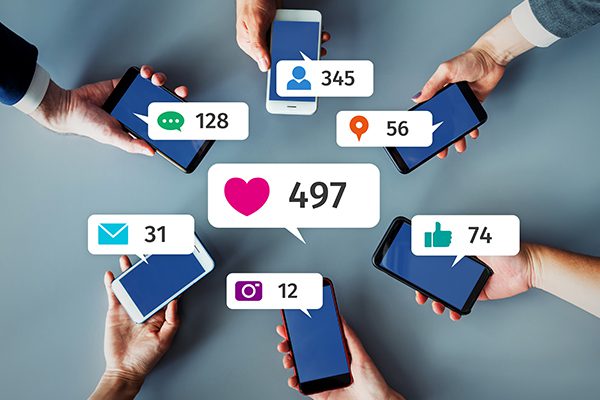
It’s for being a teacher. That has always been in my blood and will always be in my blood. Even though I have changed my direction over the years, I can’t live without teaching. Even when I had my photography business, I walked away from it because I did not have as much of the teaching component to it. One of my books, Teach Your Expertise, is one of my core things. I’m doing this learn, do and teach triangle.
In anything in my life, as soon as I learn or master something, then I have this, “I have to teach it to someone. Otherwise, I will burst.” I want to be remembered for that and I always want to make people’s lives simpler. I’m all about simplicity, step-by-step processes and breaking stuff apart. One of my degrees is in engineering. I’m all about, “How do we make it simple?” I explain it to people. Teaching would be the thing I would like to be remembered for.
How do we find you? How do people find you on your social media or website?
The easiest and the best way to connect with me and know everything that’s going on in my life is by joining my Facebook group. It’s called Business Owners Who Think Big. You can type it in and you will find it. If you are interested in participating in any of my challenges, we have schedules for the next ones. In 2020, we did at least five. In 2021, we will probably do the same. We do them every couple of months. It’s all happening in that group. If you want to join my group, Business Owners Who Think Big, you will always know what’s going on in my life.
Alina, thank you so much for your wisdom and expertise. I want you to share and like this. If you know someone who’s struggling with their challenges and you want to share Alina’s genius, please forward this show to them. They will thank you immensely for it. Make sure you like the show. I appreciate you being our guest and I appreciate your time, energy and expertise.
We do have a gift for them too. One of the questions I get from people is, “Can we get a little bit more details on the elements that go into creating a five-day challenge?” I have a very special gift for you called Challenge Checklist. You can go to TheChallengeChecklist.com and download it. It’s a PDF that has the checkmarks and that’s the same checklist me and my team use when we create new challenges. That has everything you need to create in terms of the names, posts, emails, promotional materials, and opt-in pages you need. Everything is included there. I hope you go and grab that link.
Thank you for doing that. Thank you for serving us and giving us a free gift because we love prizes. I appreciate your time and I appreciate the wisdom that you shared.
Thank you.
You’re welcome.
Important Links
- Teach Your Expertise
- Profitable Online Challenges
- https://businesssuccessedge.com/
- PLF
- Business Owners Who Think Big – Facebook group
- TheChallengeChecklist.com
- https://www.Facebook.com/AlinaVincent
- https://www.LinkedIn.com/in/alinavincent/
- https://www.Amazon.com/Leverage-Your-Expertise-Entrepreneurs-Expertise-Based-ebook/dp/B09CG4X9T7
About Alina Vincent

Alina Vincent is a business strategist, speaker and a bestselling author of “Teach Your Expertise”. She’s known globally as the creator of the “Profitable Online Challenges” Formula, which helped her grow her business from zero to over a million dollars in just 4 years.
